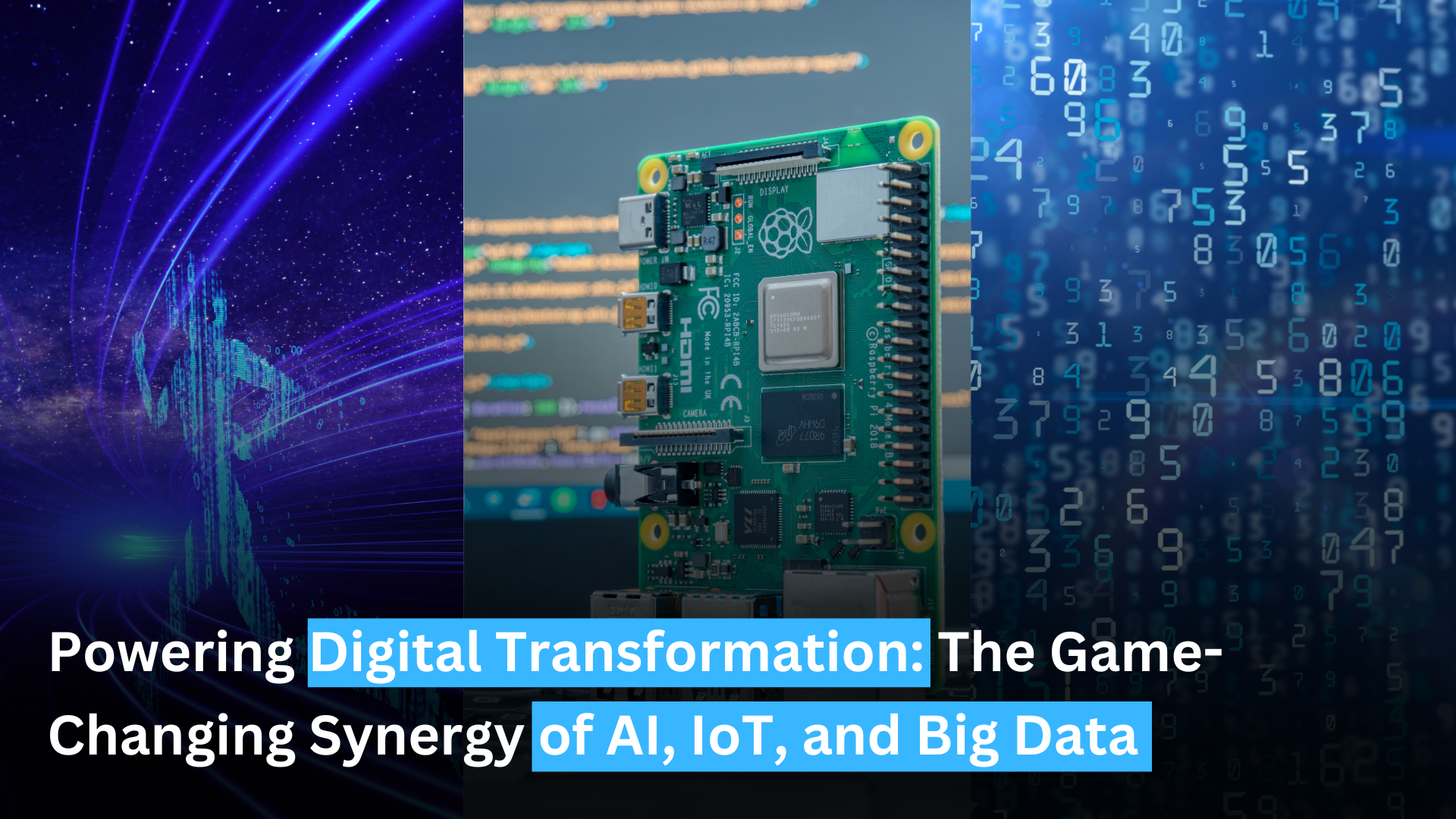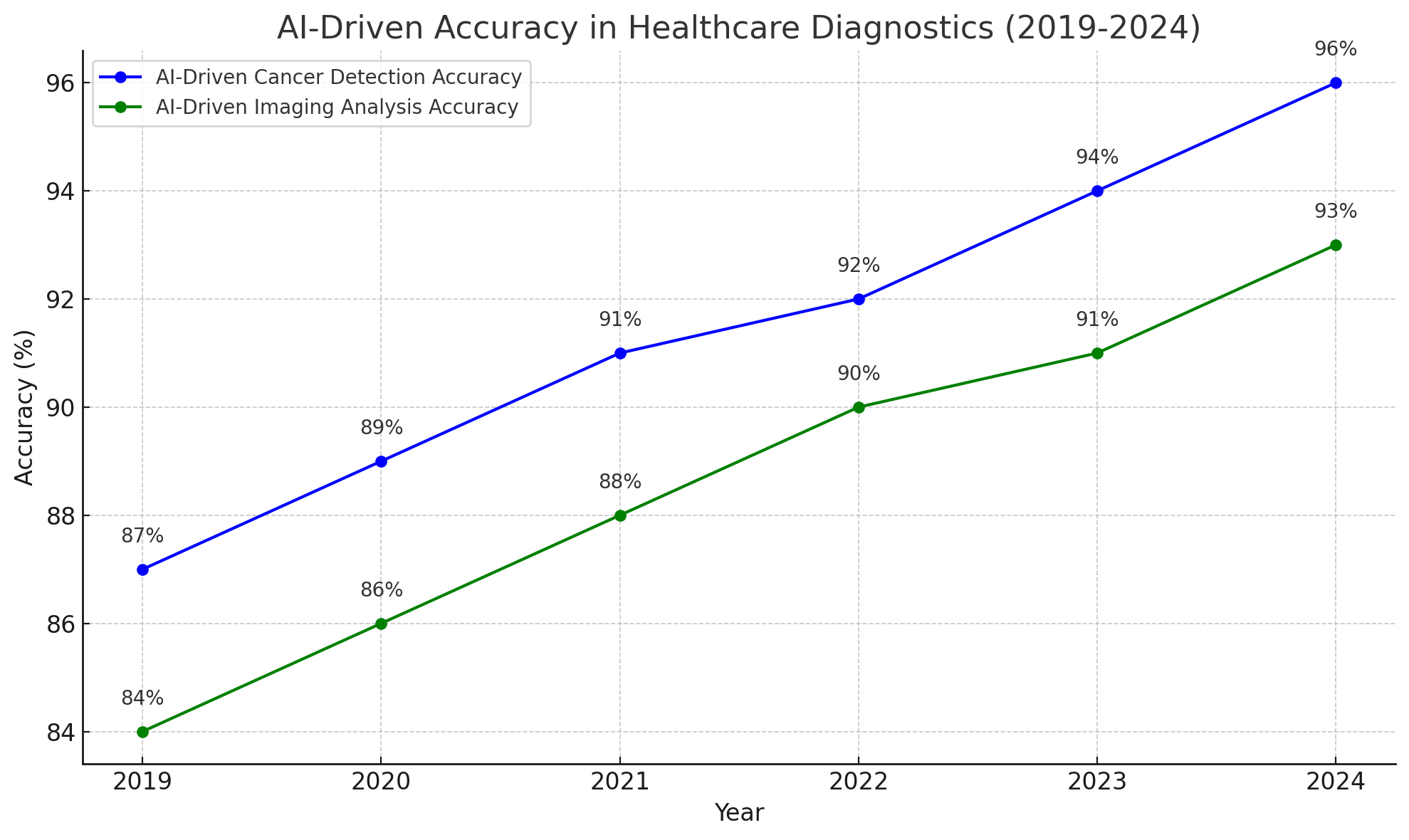
Imagine a world where machines can think for themselves, devices talk to each other, and businesses know exactly what customers want before they even ask. This is no longer science fiction—it’s happening right now, thanks to the combination of AI (Artificial Intelligence), IoT (Internet of Things), and Big Data.
These three technologies are transforming the way companies work, making them smarter, faster, and more efficient. Let’s explore how they work together and how they can be used to improve businesses.

When AI, IoT, and Big Data come together, they create a powerful synergy. This combination drives what we call Industry 4.0, the next phase in industrial innovation. Factories are no longer just places where products are made—they are becoming intelligent environments where machines, sensors, and systems communicate and make decisions in real-time.
For example, imagine a factory where every machine is connected to the internet. These machines can monitor themselves and predict when they might need maintenance. Instead of waiting for something to break down, AI analyzes data from IoT sensors to suggest when a repair is needed. This means less downtime, faster production, and fewer delays.
This transformation doesn’t just help factories. Retailers, healthcare providers, and supply chains are all becoming more efficient, using data to streamline processes and improve customer experiences.
Digital transformation is about using technology to reinvent businesses, making them more agile and responsive. AI, IoT, and Big Data play a crucial role in this shift. Businesses no longer have to rely on guesswork—they can use real-time data to make informed decisions.
Let’s look at retail. With IoT sensors tracking stock levels, AI can forecast which products are in demand and ensure shelves are always full. Big Data, on the other hand, helps companies analyze customer behavior and improve shopping experiences. This is why when you browse online, the store seems to know exactly what you’re looking for.
In manufacturing, AI is used to automate processes, while IoT devices monitor machines and production lines. Big Data helps businesses analyze performance data to find areas for improvement. By combining these technologies, companies become more efficient and can adapt quickly to changing market conditions.
In healthcare, the combination of AI, IoT, and Big Data is making patient care smarter and faster. Imagine a world where doctors can monitor patients remotely using connected devices that continuously track their vital signs. These IoT devices send real-time data to AI systems, which can analyze the information and alert doctors if something is wrong.

For instance, a patient recovering from surgery might wear a wristband that tracks their heart rate and blood pressure. If the AI detects any abnormal readings, it sends an alert to the doctor, allowing them to act quickly. This not only saves time but can also save lives by providing care before the situation becomes critical.
Healthcare providers also use Big Data to identify trends and patterns in patient care. By analyzing large amounts of data, they can predict health issues and offer more personalized treatment plans, improving overall healthcare quality.
Supply chains—the networks that move products from manufacturers to your doorstep—are becoming smarter with the power of AI, IoT, and Big Data. Today, every stage of the supply chain can be monitored in real-time, from the moment a product leaves the factory to when it reaches your door.
IoT sensors installed on delivery trucks and cargo containers provide live updates on the location and condition of goods. AI plays a crucial role in optimizing delivery routes, reducing delays, and ensuring faster, more efficient deliveries. Big Data helps businesses predict demand patterns, allowing them to maintain optimal inventory levels and meet customer needs without interruptions.
This intelligent supply chain model cuts costs, boosts efficiency, and guarantees on-time deliveries. Businesses can proactively manage disruptions like weather conditions or transportation delays before they escalate. Just as supply chains evolve with AI, businesses can enhance customer interactions by partnering with an AI chatbot development company to deliver smarter, real-time communication solutions.
In the world of consumer goods, AI and IoT are revolutionizing the shopping experience. Retailers are using these technologies to understand customer preferences and create personalized shopping journeys. Stores can now track inventory with IoT sensors, ensuring products are always in stock. Meanwhile, AI analyzes customer data to recommend items based on past purchases or browsing history.
Shoppers are also benefiting from smart devices. Imagine a fridge that automatically adds groceries to your shopping list when supplies run low, or an AI-powered app that suggests meals based on what’s already in your kitchen. These conveniences are making daily life easier while helping retailers deliver better service.
The combination of AI and IoT, often called AIoT, is the next step in the evolution of smart devices. With AIoT, devices not only collect data but also learn from it. This means your smart devices can make decisions without your input.
For example, in a smart home, AIoT enables devices like thermostats and lighting systems to adjust automatically based on your habits. If you tend to come home at a certain time, your house will be ready for you—lights on, temperature just right, and maybe even a hot cup of coffee brewing. It’s all done seamlessly, with little to no input required.
Businesses are adopting AIoT to automate processes, from smart factories that self-manage production to energy grids that adjust power usage based on real-time data.
A Digital Twin is a virtual model of a real-world object or system. Using AI, IoT, and Big Data, businesses can create digital twins to simulate different scenarios and optimize operations without interrupting the real-world system.
For example, a company might create a digital twin of an entire factory to test changes before implementing them in real life. This allows them to predict how different factors—like machine settings or production schedules—will affect the outcome. If the digital twin shows that a certain process will cause delays, the company can fix the issue before it impacts production.
This technology is transforming industries, allowing businesses to innovate faster, reduce costs, and improve efficiency by making data-driven decisions.
AI, IoT, and Big Data are not just futuristic concepts—they are here today, driving businesses forward in ways that were once unimaginable. These technologies help businesses work smarter, make better decisions, and stay competitive in a world that’s constantly changing. From smarter supply chains to life-saving healthcare innovations, AI, IoT, and Big Data are shaping the future of how we live, work, and interact with the world.
Artificial Intelligence Insights and Trends